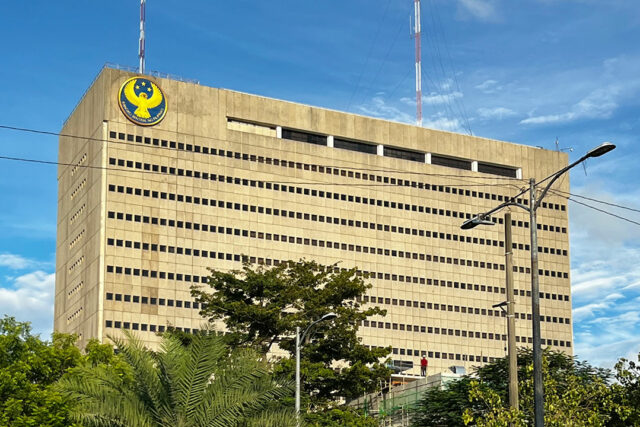Thinning reserves and why we need nuclear energy
After many weeks of frequent yellow-red alerts this year, last Saturday, June 1, was really bad because a rotating blackout finally happened. On average it was 1.5 hours long in many Meralco franchise areas, but I was in western Pangasinan that day and the blackout lasted from 6:30 to 9:40 p.m., or three hours and 10 minutes. While electric lights can be substituted by candles or small movable solar lights, it was the absence of electric fans, and the inability to recharge mobile phones, laptops and other gadgets that worsened things.
I was searching to find out what big power plants were out, how many megawatts (MW) had been lost the past few weeks, which the narrative that “generation companies (are in) collusion to raise prices” is feeding and spreading. I checked the website of the Independent Electricity Market Operator of the Philippines (IEMOP) and I found the answers in their Weekly Market Watch. I looked at the last four weeks of 2024 and the comparative four weeks of 2023. Here is what I discovered.
1. The power supply this year keeps rising, it is not flatlining or falling. Over the last four weeks it has risen by 9% to 12% over the level a year ago. This is good, and the suggestion that the generation companies (gencos) are in collusion is therefore wrong and dishonest.
2. Power demand and Demand + Reserves are rising faster than they were a year ago, at 11% to 13%. This resulted in the further thinning of the supply margin this year, which contracted by 11% to 45%. Which explains the frequent yellow-red alerts.
3. The generator weighted average price (GWAP) is falling by an average of 2% to 16% compared with a year ago, this despite the decline in the supply margin. This means that the gencos are not really earning that much — their supply is stretched but their price is capped due to price control via secondary price cap at the Wholesale Electricity Spot Market (WESM). They cannot produce additional reserves due to price control (see the table).
In addition, the GWAP are nominal prices, not real or adjusted for inflation. So, if the 2024 prices are adjusted for inflation, the decline in prices would probably be by 3% to 20% compared to year ago levels.
THREE POLICY REFORMS
To help address the above problems, I see the need for three important changes in energy policies.
1. Increase the power supply big time, something like 12% yearly vs. the average increase of 5% to 6% in recent years. In gigawatt-hours (GWH) generation, this means an annual increase of 14,000 GWH/year.
This seems a stretch — twice the actual average increase of 5,000 to 6,000 GWH/year in recent years. And this is even higher than my previous estimate of a 7,000 to 9,000 GWH/year increase needed from 2025-2028 based on a GDP growth target of 6.5% to 8% yearly over the same period.
2. Adopt energy agnosticism and remove the priority or mandatory dispatch in the grid of intermittent renewables. Saving the economy from potential and actual blackouts should have precedence over “saving the planet.” Fossil fuel plants and nuclear plants can give us energy security at competitive prices, more so than intermittent renewables, especially wind and solar.
3. Lift or remove the price control at WESM for being anti-consumer and anti-jobs creation. The short-term gain of forced low prices is a lot less than the short- to long-term pain of potential/actual blackouts, and resultant discouraged investments and job creation in the country. The reserves market should also proceed without a price cap or the threat of any price control.
THE NUCLEAR OPTION
Hardly discussed in public discourse but the “elephant in the room” solution to thinning power reserves is the use of nuclear energy. Nuclear power offers a high energy density, like over 100,000 times that of coal or gas, and over 300,000 times that of solar or wind. That means it can produce lots of electricity in a very small land area, using very small volumes of uranium or other materials, and sell electricity at low or very competitive prices.
About safety: the last fatal nuclear accident was Chernobyl (in Ukraine) in 1986 with about 30 direct deaths and a few thousands suspected indirect deaths. The Fukushima disaster in 2011 has zero casualties and no sickness, but hundreds of thousands of people were evacuated as a precautionary measure.
Consider these recent reports in BusinessWorld: “It’s time to tap nuclear energy, lawmaker tells government” (April 17), “DoE signs two more deals with US to enable nuclear transition” (May 21), “Meralco about to complete feasibility study on micro-modular reactors” (May 29).
I like this perspective from Emmanuel V. Rubio, the outgoing President and CEO of Aboitiz Power, who correctly observed that “To ensure system reliability, the grid will require stable balancing capacities, most likely from gas-to-power technologies and eventually, nuclear.
“Nuclear does not have direct carbon dioxide emissions and it provides for stable baseload power, high energy density that can output large amounts of energy across several decades. A deliberate long-term nuclear energy program must be planned and enforced to assure safety, effective regulation, efficient operations, commercial feasibility, and optimum benefit. Government policies, workforce development, successful technology transfers, and access to financing for high upfront costs will determine the fate of nuclear power generation in the Philippines. It is a tall task for both the public and private sectors.”
At the UN meeting Conference of Parties (COP) 28 in Dubai last December, 25 countries signed a “Declaration to Triple Nuclear Energy Capacity by 2050.” Four of these countries were Japan, South Korea, Mongolia, and the United Arab Emirates. China, India, Taiwan, Pakistan and Bangladesh were not among the signatories, but these countries already have high or rising nuclear power generation.
The Philippines should hasten the adoption of nuclear energy in power generation plus other nuclear applications in agriculture, healthcare, and other sectors.
Bienvenido S. Oplas, Jr. is the president of Bienvenido S. Oplas, Jr. Research Consultancy Services, and Minimal Government Thinkers. He is an international fellow of the Tholos Foundation.
















